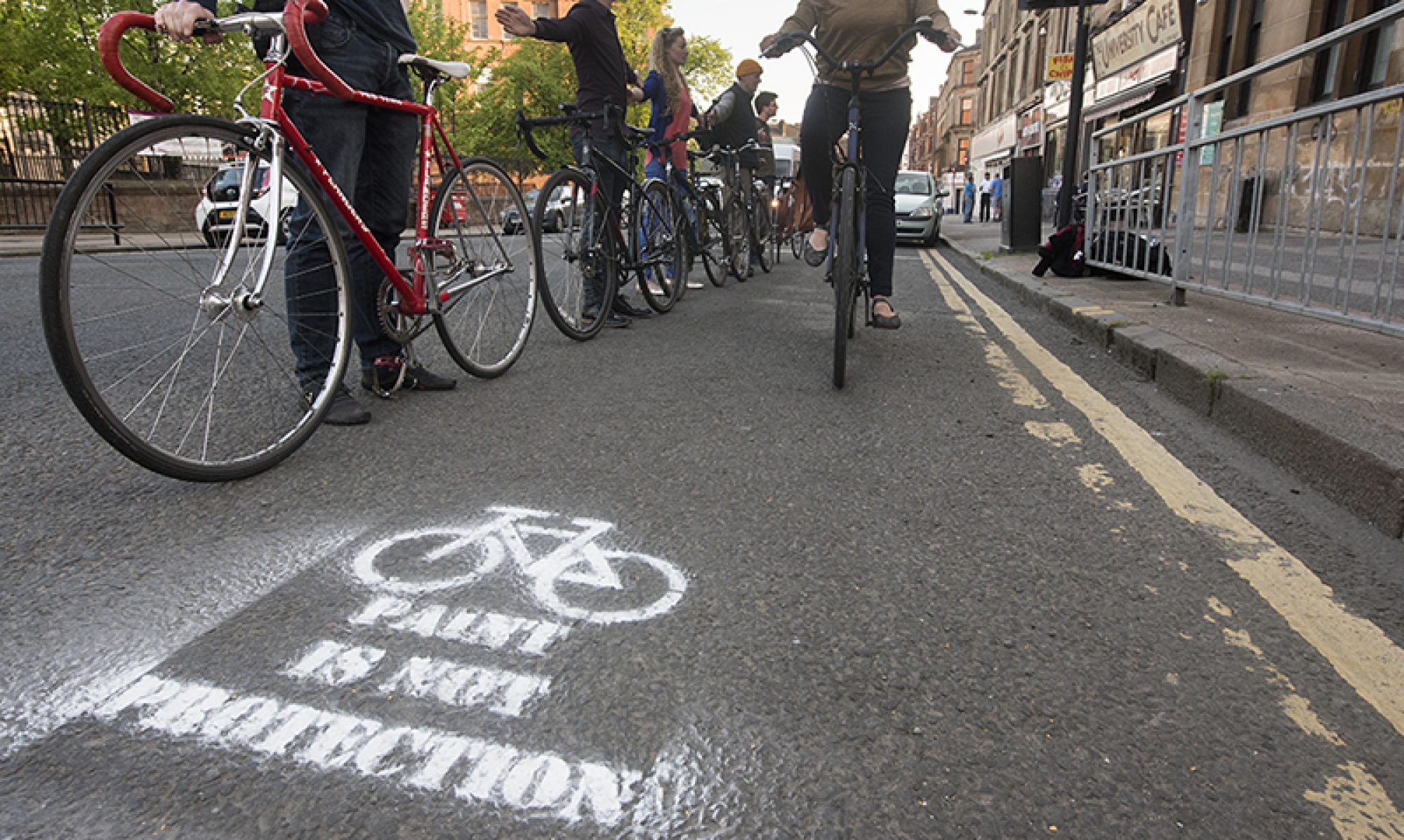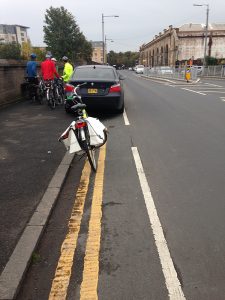In the second of two blog posts we would like to introduce our other new co-convenor – Iona Shepherd. As you may know, GoBike is undergoing a change in convenorship, as Trisha has decided to take a small step back after many hardworking and fruitful years as Convenor. We are deeply thankful that she has agreed to continue working on the ‘Consultations’ side of GoBike, and look forward to new horizons with her still on board. Here’s Iona:

“Cycling is going to change the world. Er, hold on you say, that’s a bit much isn’t it? Well, it changed my world in the little part of it I started really using a bike to get around in, here in Glasgow, and I truly believe that that can extend to the rest of the world. When I first realised that through travelling by bike, I could ditch the crowded bus, avoid the congestion, yet get to work faster and still not have to go to the gym in the evenings, my opportunities and horizons were opened up and suddenly I’d grown wings. I no longer had to worry about travel timetables, I had the freedom to go wherever I wanted to, by whatever route I chose, and I could stop off wherever took my whim. And I saved so much money on travelling around the city that it meant I could buy even more bikes! Oh and there’s more, I was fitter, healthier, energised and happy in the knowledge that I wasn’t impacting on the environment. And my happiness was fed further by all these other wonderful people on bikes, who’d chat about the weather at traffic lights, encourage me at locking stands, and nod conspiratorial hellos when out on the road. Cycling has given me absolute freedom.
I am aware though, that if you cycle in the West of Scotland you will know all of this, because these are the things that keep people here riding, because as you will also know, riding a bike here can often be really tough. The cycling infrastructure we have is few and far between, and the design and maintenance of what little we do have is decades behind the forward thinking cities in Europe. Our cycle paths tend to meander the long way round through back streets, taking us away from our desire lines of travel. What we need are direct routes if people are going to see cycling as a viable transport option. Direct routes such as the ill-fated and incomplete Bearsway that needed and failed to find brave political decisions to take space away from the motorist. We have a proliferation of shared use paths as the majority share of our cycling network. Shared use paths put people walking and cycling into conflict, they create confusion, they disappear as invisibly as they appear, and are simply not a good design for cycling speeds. Yet even now they are being built as standard into new infrastructure in areas like Govan Fastlink. Cycling around our networks, it is clear that very few of our paths join up, and we are often spat out with no consideration into busy roads. Some roads provide non-enforcable bike lanes in paint, often in the door zone, offering no protection and in many ways actually putting us in greater danger. Maintenance of the parts of the network we do have is given very low priority within our councils, where leaves can render some parts unusable during Autumn, ice, the same during Winter, and glass, potholes and parking are rife within our cycling spaces during the rest of the year. Our car-centric provision and attitudes can make folk on bikes feel very unwelcomed on our roads. Put in short, it’s not always pretty out there.
But things are slowly improving, thanks in a large part to cycling campaigners in organisations such as GoBike who have given up their free time and put in masses of work and effort into fighting for cycling to be considered and for better design. It is starting to feel like our voices are being heard in parliament and by some forward thinking councillors, and even out on the roads I am starting to see a difference not only in the improved design of lanes such as the South West City Way, but in the number of cyclists out using them all year round. I’m so excited that one of my main commuting routes up Victoria Road is soon to become a segregated cycle lane. There are big plans afoot for more people friendly spaces all over the city, in Woodlands, Battlefield, Byres Road, Queen Margaret Drive, and many others. We have our hands full making sure that these plans have our needs properly met, but that’s a good thing, and it’s why we need your input. Already we have intrepid GoBike members out there working hard on mini-campaigns such as Space for People Byres Road, and Friends of the South City Way. This coming year we are going to need you all to get more involved and if you feel like you can be a part of our movement, you can help by joining our membership and having your head counted to make our voice more significant. Get involved in our conversation on Slack (drop us an email expressing your interest), you can help us write to councillors, show them your local roads, respond to consultations, like and share our social media, write us a blog, tell your friends about us, and engage in some real world action like the Ride for a Better Byres Road. We’d also love to know what you would like to see from us, and how you think we can improve as a campaign. Let us know your feedback and ideas – both Dave and I can be reached on convenors at gobike dot org .
It’s clear that these positive changes we are starting to see are going to take time to manifest onto our roads, and while that happens, people on bikes are facing challenges on a daily basis. I too face these daily challenges and that is a part of what gives me the push to want to fight harder to make the changes better and make them happen faster. I know that my co-convening sidekick Dave also faces similar regular challenges out on the road, and having already worked closely with him on projects like Pedal on Parliament, and Friends of Bearsway, I’ve seen how his energy, smart thinking and innovative approach can be of a huge benefit to pushing campaigns forward. I hope that by working together Dave and I can continue to lead GoBike forward as a force to be reckoned with.
So can cycling really change our world? In a country where 26% of us are living in poverty and 91% of low income families do not own a car, yet our roads are congested and overloaded and our health is putting pressure on the NHS to breaking point, I think the answer has to be yes. I believe that campaigns like GoBike will help to bring about a turning point towards a more utopian and people friendly way of living for us all. Dave and I are both really super excited about becoming co-convenors of GoBike and hope that you can help us guide you to change the West of Scotland to become better for people of all ages and all sizes, on and not yet on bikes. Thanks for having us along for the ride!”
































